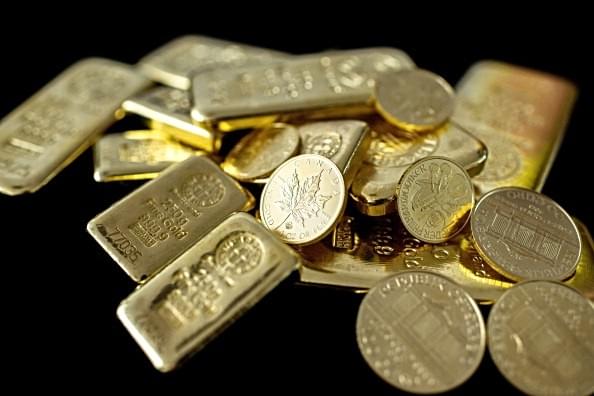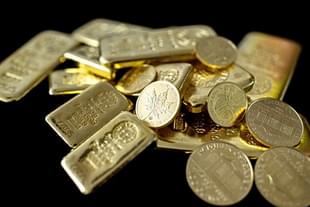Economy
Comeback Kid Of 2019: Why Gold Has Left Most Market Indices In The Dust
R Jagannathan
Aug 21, 2019, 01:49 PM | Updated 01:43 PM IST
Save & read from anywhere!
Bookmark stories for easy access on any device or the Swarajya app.


With the return of global growth uncertainties and trade wars, gold has begun to take centre-stage once again.
In the calendar year to date, gold has risen by 17.7 per cent in US dollar terms, and 20.8 per cent in rupee terms, easily outperforming shares by a wide margin. (Source of data: goldprice.org).
In the calendar year to date, the Dow has delivered 11 per cent and the BSE Sensex around three per cent, and gold has clearly left them far behind.
From its June peak, the Sensex has actually tumbled eight per cent till now. The 15-year annual average returns work out to 9.6 per cent in US dollar terms, and 12.3 per cent in rupee terms.
As the world economy weakens and governments everywhere start easing interest rates, one should see the stock markets doing much better, but the lesson to learn for the long term is that gold must be part of any diversified portfolio.
You don’t need to tell Indians this, for they have bought gold all the time — more when it is cheaper, and less when it is costlier. The only one who hasn’t got the message is the government.
In a foolhardy bid to wean Indians away from the habit of buying gold, it has been busy offering them gold paper — sovereign gold bonds — which actually carry a positive interest rate and are free from capital gains tax on maturity.
The annual interest rate offered on sovereign gold bonds is currently 2.5 per cent (it was earlier 2.75 per cent), and these bonds have soared along with the rising price of gold globally.
When these bonds mature, the government will not only have to fork out more by way of redemption prices but also not get capital gains tax on the gains. Sovereign gold bond buyers have essentially been given a free lunch.
The sovereign gold bonds (2.75 per cent) maturing in 2024 (tranche V) have seen their listed prices soar to 12 per cent in this calendar year, from Rs 2,934 to Rs 3,298 today (21 August, around 1pm), and, if global gold prices continue rising, it will rise in tandem.
Buying these bonds from the market is tough, for trading is thin. The UTI Gold Exchange Traded Fund, which is easier to trade, has delivered 19 per cent since 1 January this year.
Two realities to note from the above numbers: one, gold should be a part of most portfolios, even if only as a balancing factor against economic uncertainty. Over the last 15 years, gold has delivered negative returns to Indians only in two years (2013 and 2015).
Two, government should not be trying to give citizens an easy ride on gold bonds with almost no risks attached.
Jagannathan is former Editorial Director, Swarajya. He tweets at @TheJaggi.




